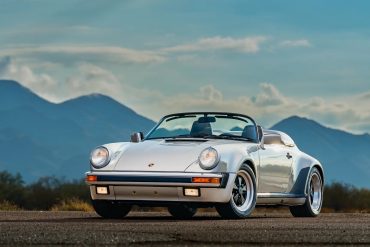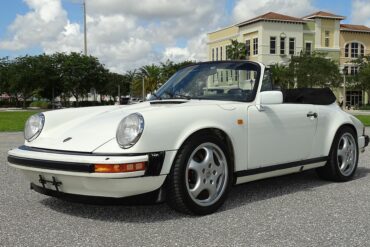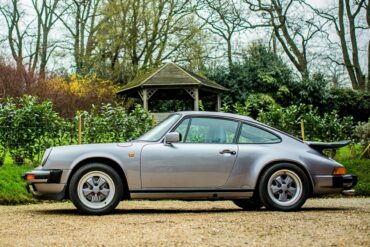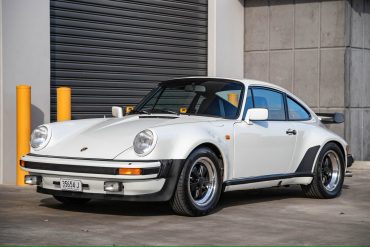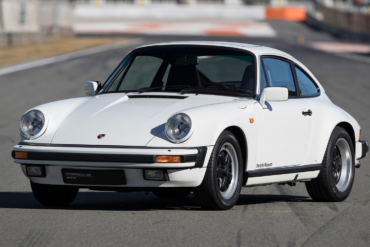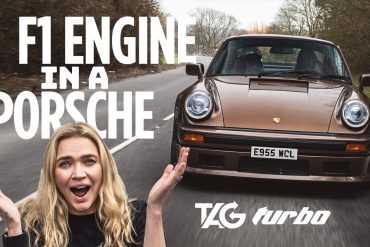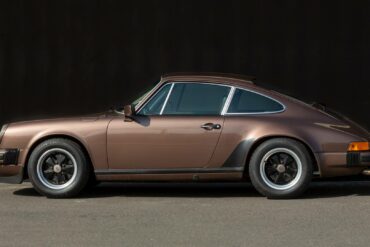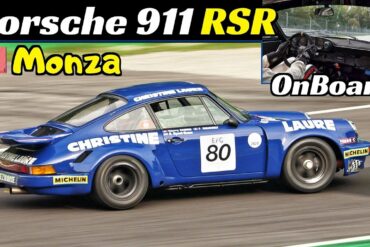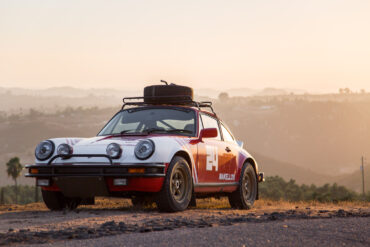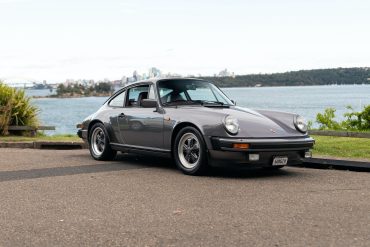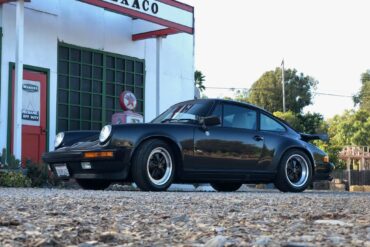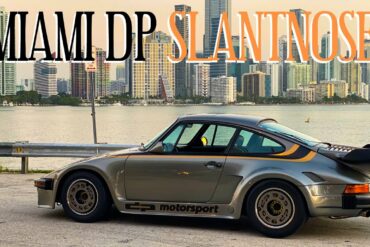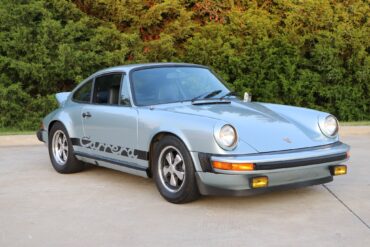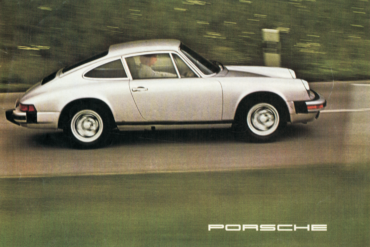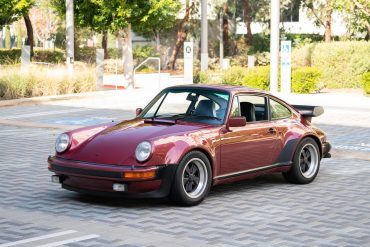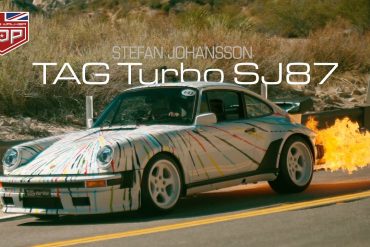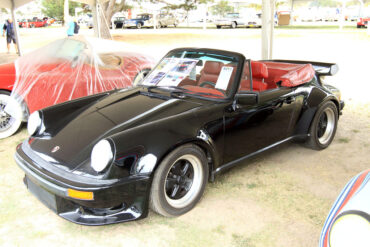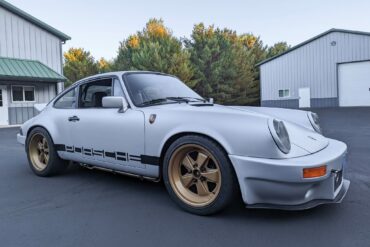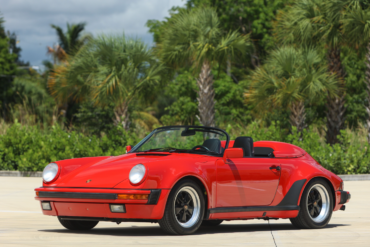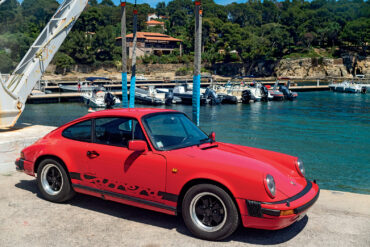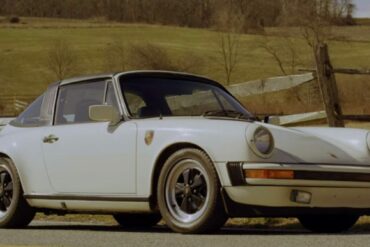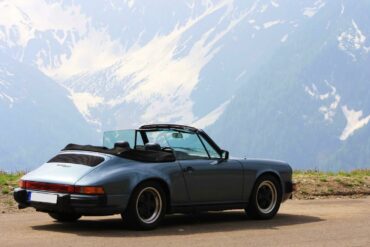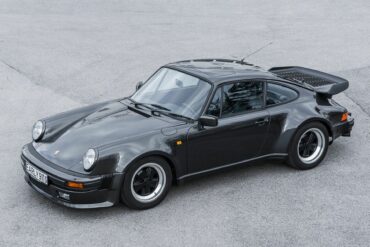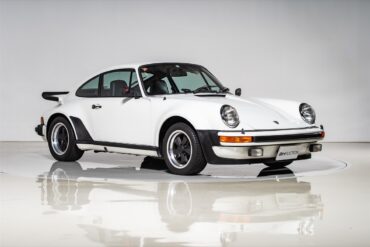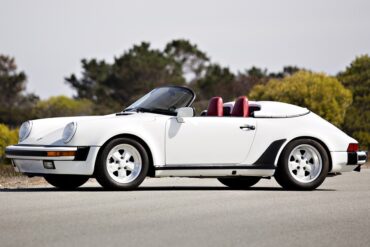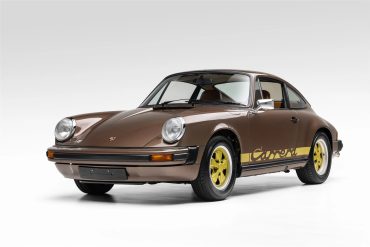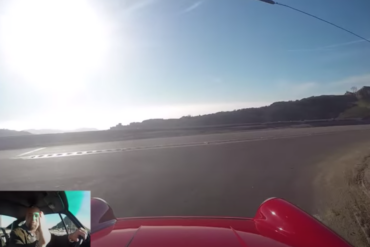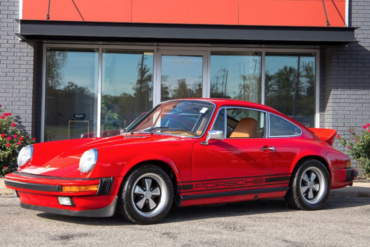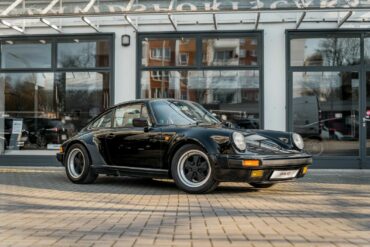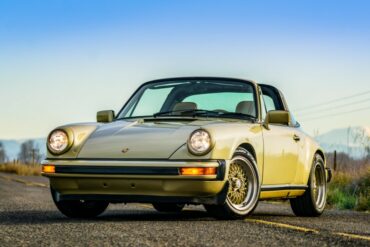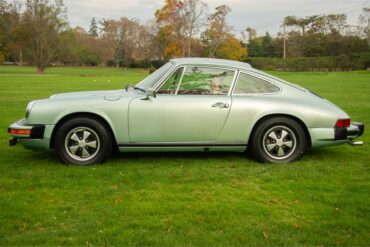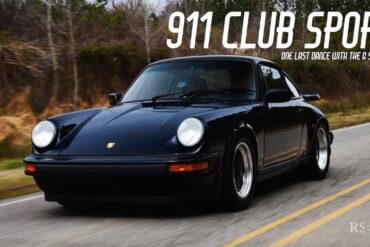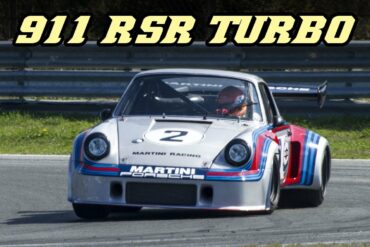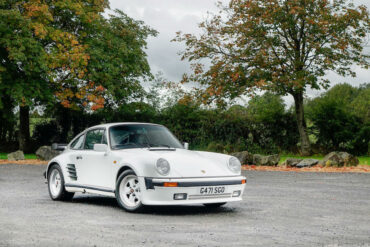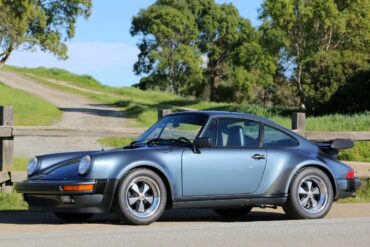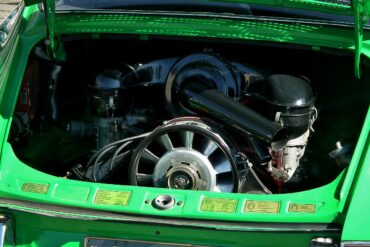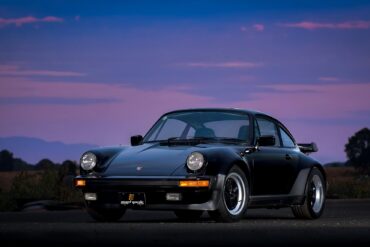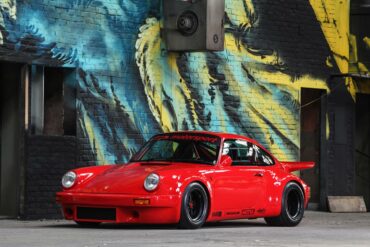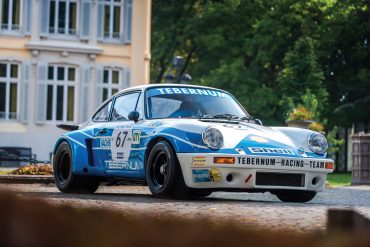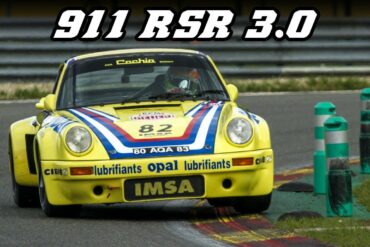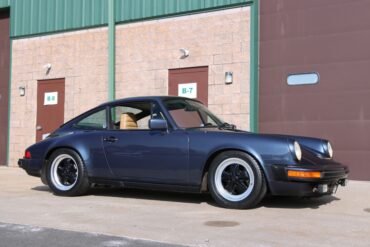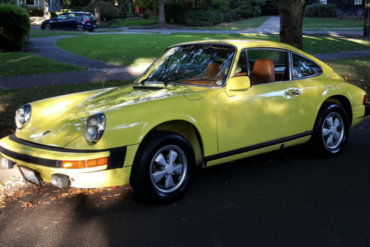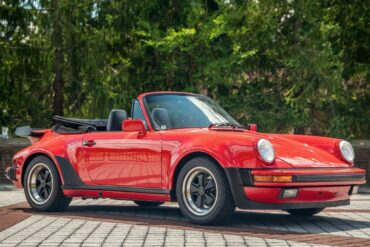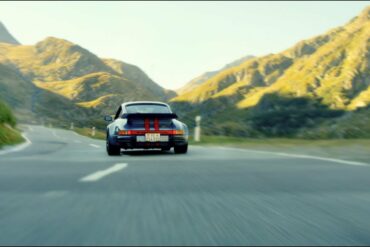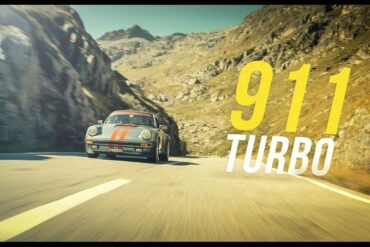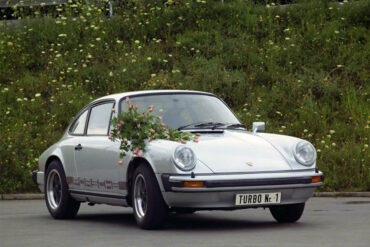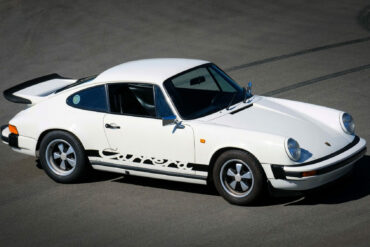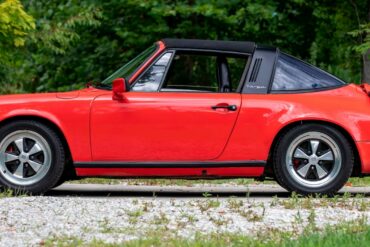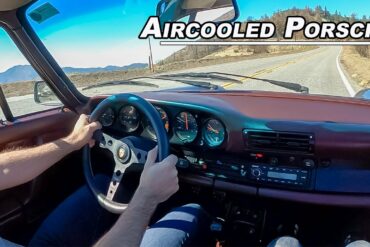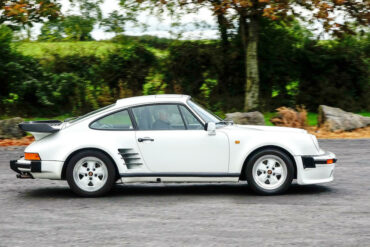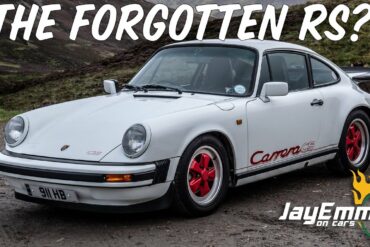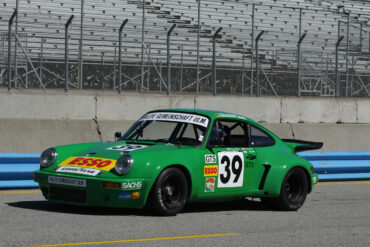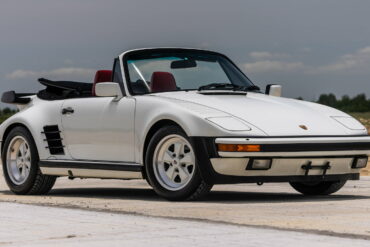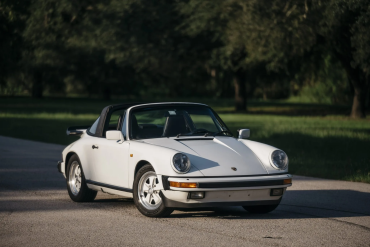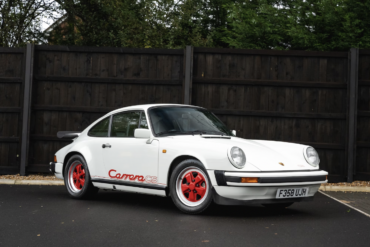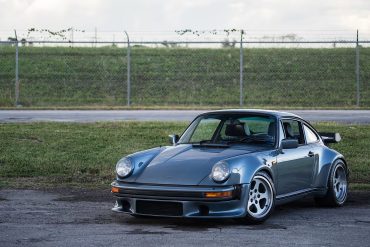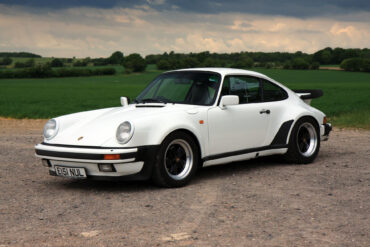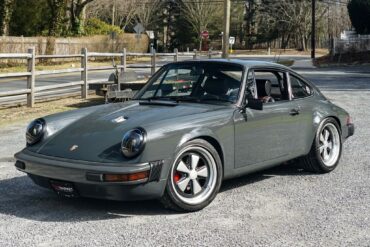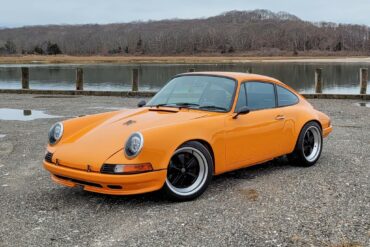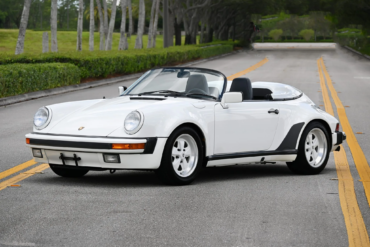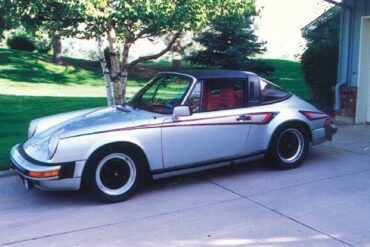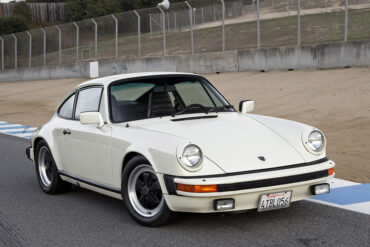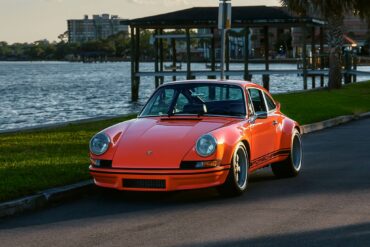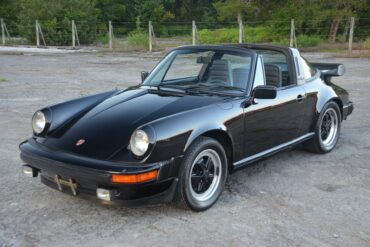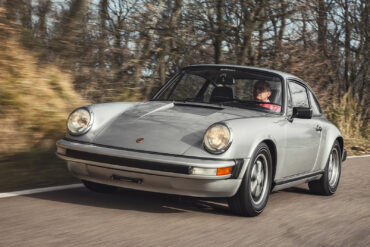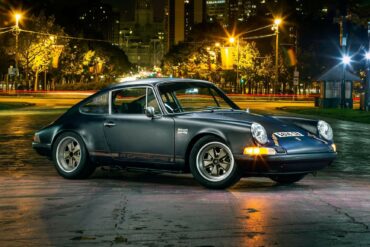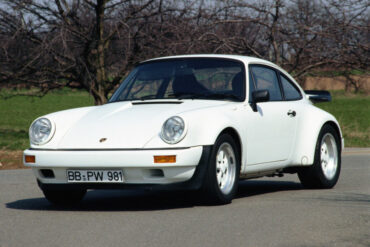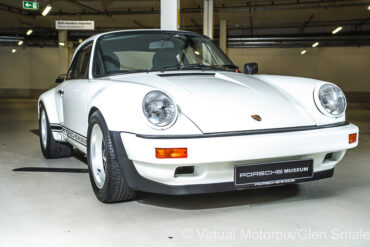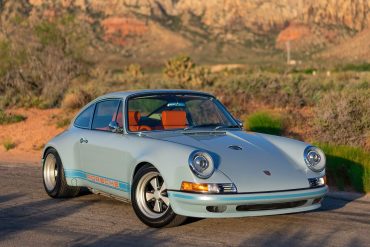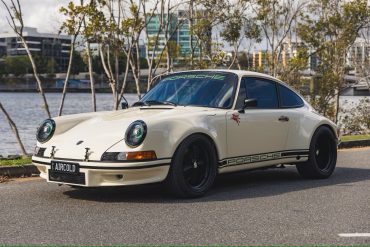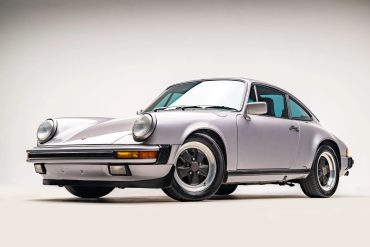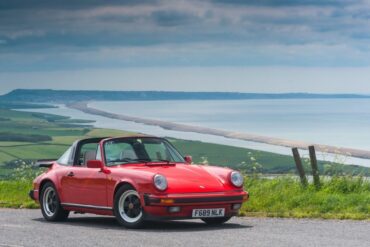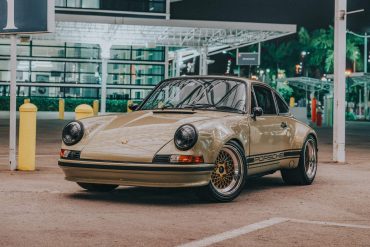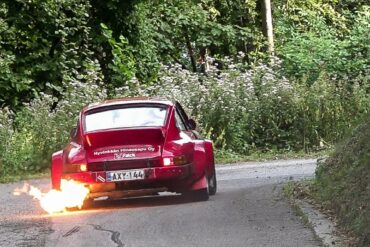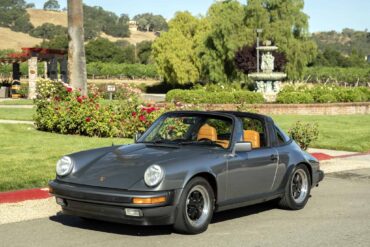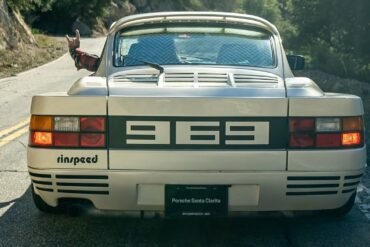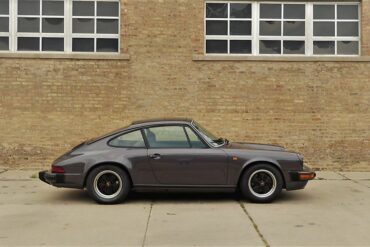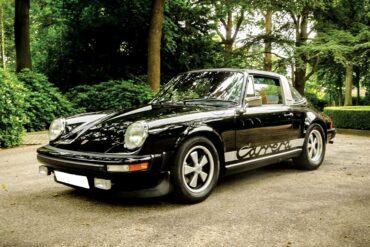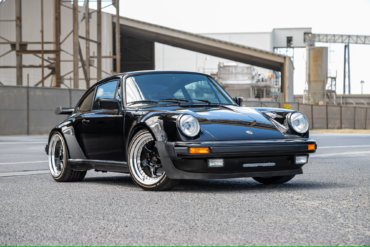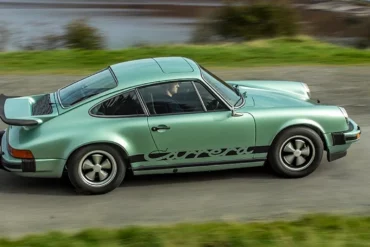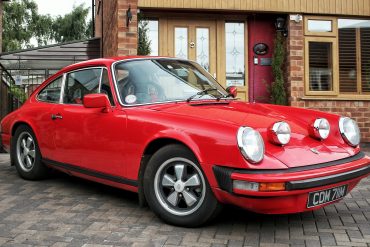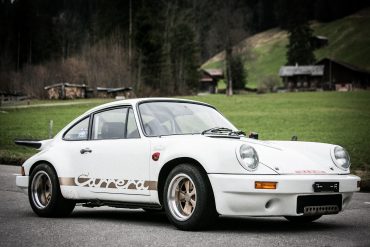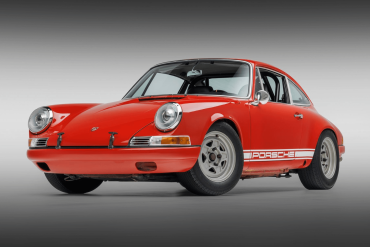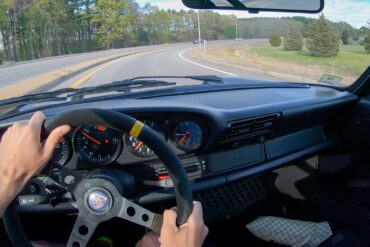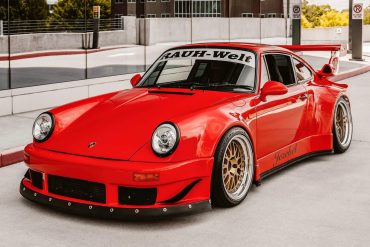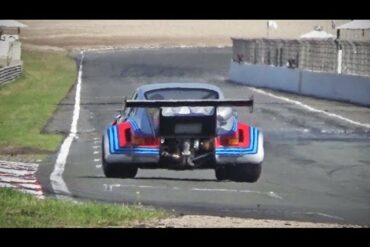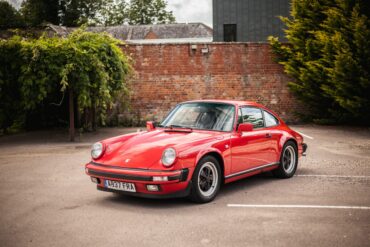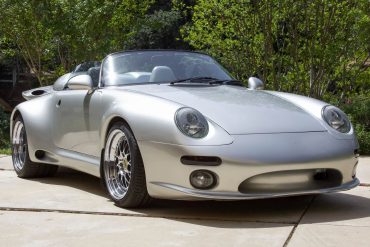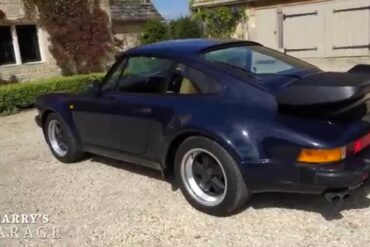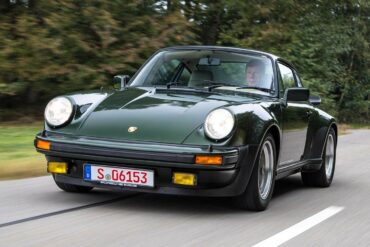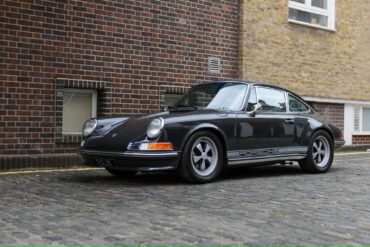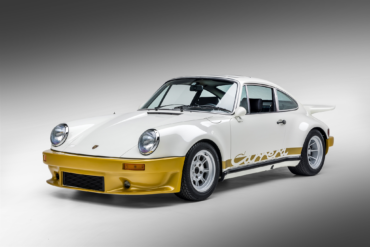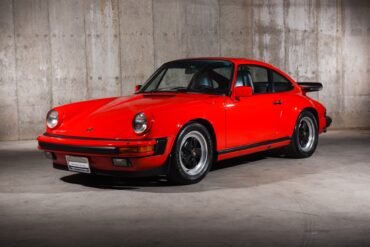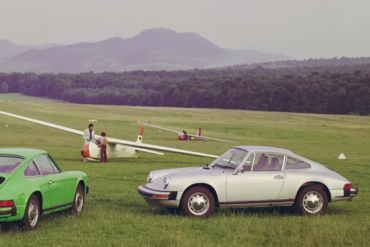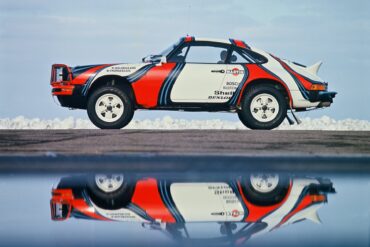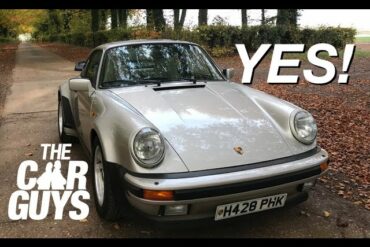One of Porsche’s most iconic cars ever was the 356 Speedster. The uniquely designed Speedster first came to life in...
After producing no convertibles for 18 years, Porsche launched the 911 SC Cabrio in the spring 1983. The top made extensive...
In 1988, Porsche produced 875 examples of the CE or Commemorative Edition 911 Carrera in coupe, targa and cabriolet variants to mark the production of the 250,000th 911. Distinguishing features include special diamond blue metallic paint with color-matched Fuchs wheels, front and rear spoilers, and interior carpets and leather. These cars also featured Dr. Ferdinand Porsche's signature embroidered on the seats in the headrest area.
The 930 was the most capable supercar of its time and catapulted Porsche’s brand worldwide, keeping up with the likes...
Porsche Option Codes – Porsche 911 (1984 Model Year) Looking to decode your 1984 Porsche 911 option codes? Want to...
Lanzante, renowned for their conversion of McLaren F1 and P1 GTRs into road-legal vehicles, is currently in the process of...
1976-1977 Porsche 911 Carrera 3.0 Coupe Pictures & Gallery ...
Porsche 911 Carrera RSR (1974) by Historika – Monza Historic 2020 + OnBoard, 3-Litre Flat-Six Sound! This great and original...
A True Head Turner We included a car from Makellos Classics in a list of our favorite Porsche custom cars...
Finally, in 1982 the model 911 SP 'Ferry Porsche' was introduced as a special edition to celebrate 50 years of Porsche. This special edition was finished in Meteor metallic paint with burgundy leather interior and a 'Ferry Porsche' signature on the headrests. Only 200 of these now-classic special cars were built (130 Coupes and 70 Targas). The 911 SC “Jubilee” or “Ferry Porsche” is the first “limited series” sold in Europe.
For 1989, Porsche produced the 25th Anniversary Special Edition model to mark the 25th year of 911 production. The 1989 Porsche brochure lists production of 500 U.S. market cars, of which 300 were coupés (240 in silver metallic paint and 60 in satin black metallic), and 200 cabriolet models (160 in silver and 40 in black). All had "silk grey" leather with black accent piping and silk grey velour carpeting. Includes small bronze "25th Anniversary Special Edition" badges.
In Magnus Walker’s newest video, he gets to drive a 1982 930 Slantnose Turbo by DP Motorsport formerly owned infamous...
In 1974, Porsche's performance version of the 911 was simply known as the 911 Carrera. It had new bumpers that complied to American regulations and the 2.7-liter engine from the Carrera RS 2.7. Other new features for 1974 included new seats, a full-width rear taillight. The Carrera deleted all the chrome off the car in favor of black window frames, wipers, doorhandles, but chrome could be ordered as an option. In 1976 Porsche replaced the Carrera with a new 3.0 liter variant.
Porsche 911 Sales Brochures (2nd Generation – G Series) Clearly going back this far, sales catalogs for Porsche cars are...
Porsche introduced the 930 Turbo in 1975, pairing a KKK turbocharger with the 3.0-liter Carrera RSR engine in road trim,...
In the world of automotive enthusiasts, the fusion of history, engineering, and art often leads to extraordinary creations. One such...
1987 – 1989 Porsche 911 Turbo 3.3 Cabriolet (930) Pictures & Gallery...
This 1979 Porsche 911SC has received some modifications, such as adding IROC/RS body styling, an upgraded suspension, custom interior, gold...
The Porsche 911 Carrera Speedster launched in 1989 as a one-year special. It had a frameless, raked windshield that was...
1976 – 1977 Porsche 911 Carrera 3.0 Technical Specifications Type 2+2 FHC Number of doors 2 Engine 3.0 L Aircooled...
Porsche Option Codes – Porsche 911 (1982 Model Year) Looking to decode your 1982 Porsche 911 option codes? Want to...
1983 Porsche 911 SC Cabriolet Pictures & Gallery ...
Porsche Option Codes – Porsche 911 (1985 Model Year) Looking to decode your 1985 Porsche 911 option codes? Want to...
Porsche Option Codes – Porsche 911 (1976 Model Year) Looking to decode your 1976 Porsche 911 option codes? Want to...
1989 Porsche 911 Speedster Pictures & Gallery...
In 1974, Porsche offered a high performance fuel injected Carrera specifically for the European market. These were close to 2.7...
Porsche 930 Turbo – One Take Matt tests a modified Porsche 930 Turbo making 150 hp more than stock! The...
Porsche Option Codes – Porsche 911 (1977 Model Year) Looking to decode your 1977 Porsche 911 option codes? Want to...
Porsche introduced a new wide-body package option. Known as the M491 option it was commonly known as the "Turbo-Look". It gave the naturally aspirated cars the look and style of the 930 Turbo with wide wheel arches and the distinctive "tea tray" tail. It wasn't just about looks however, because M491 also got you the stiffer suspension shared with the Turbo and the superior Turbo braking system as well as the wider Turbo wheels. It was available on the Coupe, Cab and Targa.
Commemorating 25 years of Porsche sports car production, the 911S Silver Anniversary Edition is distinguished by unique Diamond Silver Metallic paint and a special black leatherette and tweed interior. The first of Porsche’s commemorative ‘celebration’ cars, this Silver Anniversary was produced in a limited run of 1,063 examples, of which approximately 500 are reported to have made their way to the United States.
1976 Porsche 912 E Pictures & Gallery...
Charles and Tim – One last dance with the G series. This is a great review of the 911 ClubSport....
Porsche 911 Carrera RSR Turbo 2.1 On Track This is a 911 that wrote a big part of Porsche history....
Only 50 units made. The 911 Turbo Limited Edition comes equipped with the 330 bhp power unit normally only available in the 911 Turbo with Sport Equipment. In addition, the fitment of a limited slip differential as standard ensures the the increased engine performance can be used to it’s fullest extent. This Limited Edition also adopts the rear wheel air intakes of the Sport Equipment version. Essentially an SE without a slantnose front.
Porsche Option Codes – Porsche 911 (1987 Model Year) Looking to decode your 1987 Porsche 911 option codes? Want to...
Porsche 911 (Early Years & G-Series) Engine Codes By the time the G-Series was release, the standard engine was now...
The turbocharged 930 was produced from early 1975 was Porsche’s flagship 911 and arguably the most capable supercar of its...
For over 43 years, DP Motorsport has been modifying Porsche models for both the racetrack and the road. Their latest...
The Carrera RSR 3.0 is one of those rare and super-special Porsches, and one of the most successful Group 4...
This Porsche began life as a 1981 911 SC sunroof coupe before it was modified with a custom backdated bodywork...
Great sound, great engine! Filmed at Circuit Spa-Francorchamps, Zolder and the Nürburgring between 2011-2017. Great compilation of on-track fun in...
Porsche Option Codes – Porsche 911 (1980 Model Year) Looking to decode your 1980 Porsche 911 option codes? Want to...
1976 Porsche 912 E Technical Specifications Engine type – Number of cylinders Boxer 4 Engine Code – Fuel type Petrol...
The turbocharged 930 was produced from early 1975 was Porsche’s flagship 911 and arguably the most capable supercar of its time....
Porsche 930 Turbo on the Great St. Bernard Mountain Pass The 930 Turbo on the Great St. Bernard Mountain Pass...
Porsche 911 Turbo (930) The 930 Turbo on one of the greatest roads in the world. A short video, but...
The first road-going 911 Turbo was not the familiar 930 that entered production in February 1975. Nor was it the engine-less prototype that had appeared at the Paris Motor Show in October 1973. Instead, it was a one-off narrow-bodied mule that was subsequently gifted to Ferry Porsche’s sister, Louise, on her 70th birthday in August 1974. Built on chassis 9115600042, this 2.7 Carrera Turbo also pre-dated the prototype 930 that was shown in almost production-ready at Frankfurt show in 1974.
1974 – 1976 Porsche 911 Carrera Coupe (MFI) Pictures & Gallery...
Porsche Option Codes – Porsche 911 (1979 Model Year) Looking to decode your 1979 Porsche 911 option codes? Want to...
POV In A Great Sounding 911 GVBC is a car enthusiasts dream! Every Friday morning a group of dedicated drivers...
1989 Porsche 911 Turbo LE Pictures & Gallery...
Is this the best driving classic 911? This is a great reviews of the 911 ClubSport. The 1987 Porsche 911...
1974 -1975 Porsche 911 Carrera RSR 3.0 Technical Specifications Engine Configuration 911/75 B6 Location Rear, longitudinally mounted Construction magnesium alloy...
Live now on Mecum Auctions is perhaps one of the most popular Porsches of the 1980s, a beautiful 1987 Porsche...
This rare European model 1985 Porsche 911 Carrera Targa currently available for auction on Bring A Trailer was imported to...
1988 Porsche 911 Carrera 3.2 Clubsport Auction to Watch What a way to start the new year, finding a great...
In the mid-1980s, RUF-manufactured Porsches stood out as some of the swiftest cars globally. In top-speed assessments by “Road &...
Porsche Option Codes – Porsche 911 (1988 Model Year) Looking to decode your 1988 Porsche 911 option codes? Want to...
Dubbed “Mercy,” this 1978 Porsche 911SC Coupe has undergone a meticulous restoration and customization process, reaching an extraordinary level of...
This 1981 Porsche 911SC Coupe underwent a custom backdate-style restoration that spared no expense on high-end equipment. The Coupe was...
Don’t miss your chance to own a beautiful and highly original example of a 1989 Porsche 911 Speedster on Bring...
The 'Martini' edition of 1978, was identifiable by a set of side stripes similar to those that appeared on the 1976 British Motor Show 911 Turbo which was clad with the stripes to celebrate victories in the World Manufacturers Championship and the World Sports Car Championship, as well as the fourth consecutive racing season with sponsors Martini & Rossi. The stripes were so popular that Porsche quickly made them an option available to any owner as a factory or retro fit.
Porsche Option Codes – Porsche 911 (1978 Model Year) Looking to decode your 1978 Porsche 911 option codes? Want to...
This 1977 Porsche 911S is a stunning RSR-inspired custom build by by Zurlinden Gruppe in Monterey, California. During the restoration,...
Porsche Option Codes – Porsche 911 (1983 Model Year) Looking to decode your 1983 Porsche 911 option codes? Want to...
The base model Porsche 911, along with the 2.7 Liter 911S and Carrera 2.7, was introduced for the 1974 model year with many significant changes to meet legislative requirements around the world for both impact safety and emissions. It was available in Coupe and Targa variants, sporting engine Type 911/92 with K-Jetronic fuel injection, rated at 150 hp. For the 1975, the base model was discontinued in North America. ROW got Coupe and Targa variants, featuring engine Type 911/41 rated at 150 hp.
ROCS Motorsports reimagined a 1984 Porsche 911 Carrera Coupe with a custom backdate restoration between 2020 and 2021. The “Philadelphia...
1984 Porsche 911 SC RS (911) Technical Specifications Model 911 SC/RS – Type 954 Year 1984 Engine 6-cylinder, horizontally opposed...
Originally built by German tuner Gemballa, the Avalanche was more than just a cosmetic upgrade. Boasting a powerful single-turbo engine...
Built so that the factory Rothmans Porsche Rally Team could hit the international stage, the SC RS used the Turbo’s body with fibreglass bumpers and aluminium doors. In Autumn 1983, Porsche presents the 911 SC/RS for motor racing. The engine originates from the 911 SC, with improved performance achieved by the mechanical ball fuel injection, increased compression, the cylinder heads from the 935 and forged pistons. Racing seats are fitted in place of the standard seats.
This 1975 Porsche 911S Coupe underwent an extensive restoration project. The car’s bodywork was chemically stripped and sandblasted, and various...
The Best Driver’s Car Nobody Bought? Today I am driving a 911 Club Sport. A special version of the 3.2...
This Porsche 911 SC has been backdated to ‘F-model’ styling, featuring various modifications. It’s powered by a naturally aspirated 3.6-liter...
In 1988, Porsche unveiled the “Commemorative Edition” Carrera (also called the Jubilee Edition) to celebration the 250,000th 911. Debuting at...
1984-1989 Porsche 911 Carrera 3.2 Targa Pictures & Gallery...
This 1979 Porsche 911SC pays homage to the iconic 911 RSR and ST racing cars with a meticulous restoration and...
Best of Porsche Rally Cars Check out this compilation i made for one of the most recognizable racing car in...
1978 – 1983 Porsche 911 SC Targa Technical Specifications Type Series Production Car Built At Stuttgart, Germany Price $ $34,450...
The Rinspeed Porsche R69 Turbo, aka Porsche Testarossa, was a limited production car from Switzerland. It is believed that around...
In model year 1978, the 911 model range was reduced to two models. The 911 SC (Super Carrera) took the...
1978 – 1983 Porsche 911 SC Coupe Technical Specifications Type Series Production Car Production Years 1978 – 1983 Built At Stuttgart,...
1974 – 1975 Porsche 911 Carrera 2.7 Targa Pictures & Gallery...
Collecting Cars is proud to offer a striking example of a 1978 Porsche 911 3.0 SC featuring an all-black colour...
In 1974 Porsche offered a high performance fuel injected Carrera specifically for the European market. These were close to 2.7 RS specification and are often referred to as the 2.7 or Euro Carrera. In many regards, this car is similar to the 1973 2.7 RS in touring trim, with its 210bhp 911/83 engine, but the 2.7 Carrera is based on the updated G-series body and interior. Later Carreras that reach American shores used had reduced power and throttle response compared to Euro counterparts.
1974 – 1977 Porsche 911 2.7 Technical Specifications Body Type 2+2 seater fixed-head coupé Number Of Doors 2 Dimensions &...
1974 Porsche 911 Carrera RS 3.0 Pictures & Gallery...
Originally from California, this 1975 Porsche 911S underwent a remarkable transformation. Acquired in 2014, it was customized into a backdate...
911 3.2 Carrera POV Run Onramps and Highway driving in my Aircooled 1988 Porsche 911 3.2 Carrera. Be sure to...
This is the seventh RWB creation, known as “Jezebel.” This remarkable 1989 Porsche 911 Turbo has undergone a remarkable transformation,...
Carrera RSR Turbo On Track Fun At this year’s Historic Grand Prix I was lucky enough to capture this 1974...
1984-1989 Porsche 911 Carrera 3.2 Coupe Pictures & Gallery ...
This 1989 Porsche 911 Speedster pays homage to the original 356 Speedster, featuring a distinctive short, sharply angled windscreen and...
A Legend Reviews A Legendary Car...
Porsche Option Codes – Porsche 911 (1975 Model Year) Looking to decode your 1975 Porsche 911 option codes? Want to...
Retro Works has restored a 1984 Porsche 911 by merging the design of a 1973 classic with a newer Carrera...
Bring A Trailer is currently offering a 1977 Porsche 911S coupe that has been modified in RSR style from its...
Porsche Option Codes – Porsche 911 (1986 Model Year) Looking to decode your 1986 Porsche 911 option codes? Want to...
Also produced for the 1976 "model year", for the U.S. market, was the 912E, a 4-cylinder version of the 911 like the 912 that had last been produced in 1969. It used the I-series chassis and the 2.0 Volkswagen engine from the Porsche 914. In all, 2092 units were produced. In 1976, the Porsche 924 took this car's place for the 1977 "model year" and beyond. The power was supplied by a 4-cylinder high-performance fuel injection motor also used in the Volkswagen 411.
In 1978, the works team fields two 911 SC at the East African Safari Rally. The name of game is to survive 5,000 kilometres of the toughest tracks in sweltering heat and torrential rain. The conditions take their toll: of the 72 starters, 13 reach the finish line. Martini Racing Porsche System Engineering signs on two specialists to drive: Sweden’s Björn Waldegård (Start No. 5) and Kenyan Vic Preston Jnr (Start No. 14).
Porsche 930 Turbo – One of the Greats Remember that episode where Damian mistakenly bought a broken Porsche 911 from...


